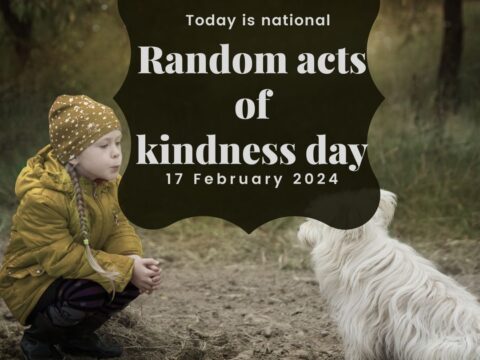All around the country, schools are turning around education through the use of technology. Here are two, one in Hawaii and one in California that show you steps that might work for you:

King David Kalakaua MS, Hawaii
When innovative school leaders decided to try a new technology program at King David Kalakaua Middle School this year, they hoped recognizing students’ good behavior would lessen their bad behavior. Their goal was to improve school climate and build positive relationships with everyone on campus by focusing on the positive. In less than six months, not only have they met that goal, but they also changed their peer’s perception of “trouble” students and helped boost grades.
“We feel like it’s had a major impact on students,” says MTSS Coordinator, Tiana Kamiko. She spearheaded the program with her fellow Behavioral Health Specialist Kristen Shimabukuro. “The campus itself feels happier. The kids are smiling more. Just the other day, we had a student telling Kristen that we’re part of the reason he likes to come to school now.”
The idea of rewarding students for positive behavior has a long history in schools, and numerous studies have shown the practice can improve student behavior, reduce suspensions, and even boost student achievement. It is, however, unusual for a school to see such a large jump in so many categories so quickly.
In Kalakaua, Kamiko and Shimabukuro took the lead in updating the school’s little-used paper reward system to an electronic version that rewards more students and offers everyone a chance to redeem prizes based on points they have earned.
The old system was a paper shuffle. Students would receive a paper ticket with their name on it for every positive deed a teacher recognized, from helping a classmate to always being prepared for class. Students would deposit their tickets in a big box and every week a few names would be drawn to win a prize, mostly snacks. “Universal recognition wasn’t happening. Some students’ tickets were never selected in the random drawing, so they were never recognized school-wide,” Kamiko says. “Many kids didn’t even turn in their tickets.”
This year, the MTSS/ PBIS team at Kalakaua decided to adopt technology from Hero K12, an online program where teachers can chart a wide variety of student behaviors, handing out points for everything from being prepared for school with supplies, assignments, uniform, and student ID (1 point) to going to an afterschool event (50 points). The school is even giving out extra Hero points for good grades with each A earning students 100 points. According to Kamiko, “by offering points for exemplary grades, we not only motivate students to pass all of their classes, but we motivate them to excel.” All staff members on campus can give and receive Hero points, from administration to office staff, from classroom teachers to education assistants, from custodial staff to security guards. This allows staff members to put themselves in their students’ shoes by experiencing the Hero program first-hand.
The big payoff for students is the ability to purchase items at a school store. In a school where the vast majority of students are economically disadvantaged, the store offers everything from school supplies and snacks to special school jackets and the biggest prize of all, the ability to reserve private time on the school’s basketball court. “It’s one of our biggest sellers,” Kamiko says, noting that students need 1,000 points to reserve time. “They have to work really hard to pay for that one.”

And that is the whole point. By noticing and rewarding students’ good behaviors, and enticing them to create good habits, Kamiko and Shimabukuro say the new program is succeeding quicker than they expected. More than 60 percent of the school’s sixth graders use the program regularly, according to a recent school survey. More than 500 of the school’s 1,200 students follow the school program on Instagram while 65 percent who answered the survey said they have purchased something from the Hero store.
But the impact is going beyond numbers. Every week, Kalakaua’s Hero team highlights the top Heroes of the week, those students who earn the most points. Recently, a group of students with serious behavior issues topped the school’s list, surprising some of the staff. “It’s a huge milestone to get those students who have shown a history of negative behavior to do so well. It speaks a lot to what Kristen and I have been trying to push,” Kamiko says. In fact, there’s a group of students at the grade 6-8 school who are isolated from other students because of past misbehaviors. But these students have become the school’s best Hero helpers who set up and monitor the basketball court when a VIP session has been booked. “They are seen as positive role models,” she adds. “It has shifted a lot of the perceptions of them.”
Hero K12, a Miami Lakes, Florida, company, started in 2014 and now serves more than 1 million students in 43 states. Schools and districts can use the company’s software to set up their own program, calibrating not only what they choose to reward but also how many points to give each item. The program is used at locations from Indian Springs High School in San Bernardino, California, to Cedar Creek Middle School in Texas, and Lyons Creek Middle School in Florida.
Indian Springs HS, California
Educators at Indian Springs High School in San Bernardino, California are running a similar program and have seen results on their campus. San Bernardino is one of the poorest cities in the country where violence is a regular part of life. Yet when the Hero school store opened for the first time at Indian Springs High School, 120 kids waited in line for 45 minutes to redeem their points for school gear. “It gave us a unified voice for how teachers were using PBIS,” says Chelsea Ramirez, the school’s PBIS coordinator. “So much of teaching is behavior and discipline. This helps teachers stay in a positive mindset.” The rewards, which included tickets for homecoming and school football games, “gave kids who would not typically be able to afford these events the ability to attend,” she adds. “They got to be part of their school’s culture.”
Back in Honolulu, the popularity of Hero threatened to overrun the school budget’s ability to purchase items for the school store. While the store started out with school supplies and snacks, it became apparent iTunes gift cards and more Kalakaua gear were coveted, Shimabukuro says. The team quickly realized they would need more money for the program. Their solution? Give students 100 points if they wrote a letter asking a local business to make a donation to the school. “The response from students was overwhelmingly positive,” Shimabukuro says. “We had a stack of 300 letters – that’s huge for our school.” The school has even created a GoFundMe page to try to raise enough money to sustain the school’s Hero store.
The results are showing on students’ bottom lines as well. Comparing this year’s grades to last year’s shows that students went from 658 A’s to 745 A’s this year, with smaller jumps in students getting B’s and C’s. The positive results seem to be coming from every corner of the school.

The number of students who needed some type of extra support, from behavioral to social and emotional help, decreased this year from 101 students to just 62. “We do think Hero has had a large impact on the climate of our school as well as the behaviors of our students both inside and outside the classroom,” Shimabukuro says.
The rewards have even improved parents’ connection with the school, she adds. When students were offered 25 points for attending the school’s Open House with their parents, the number of attendees jumped well above the typical 40-50 parents who would show up, Kamiko says. “Our cafeteria was packed and there were even people standing along the edges of the room. That’s an incredible success for our school.” This program’s success and innovativeness would not have been possible without the strong leadership of Principal Lorelei Aiwohi, teachers, and each and every staff member on campus.
***
Dealing with behavior issues day in and day out is difficult when it feels like punishment is an educator’s only option. Kalakaua Middle School and Indian Springs High School are proof that positive efforts can pay off big time. And they show positive behavior programs can implement real change across a school.
Author Bio
Wayne D’Orio is an award-winning journalist who writes frequently about education.
Jacqui Murray has been teaching K-18 technology for 30 years. She is the editor/author of over a hundred tech ed resources including a K-12 technology curriculum, K-8 keyboard curriculum, K-8 Digital Citizenship curriculum. She is an adjunct professor in tech ed, Master Teacher, webmaster for four blogs, an Amazon Vine Voice, CSTA presentation reviewer, freelance journalist on tech ed topics, contributor to NEA Today, and author of the tech thrillers, To Hunt a Sub and Twenty-four Days. You can find her resources at Structured Learning.




































